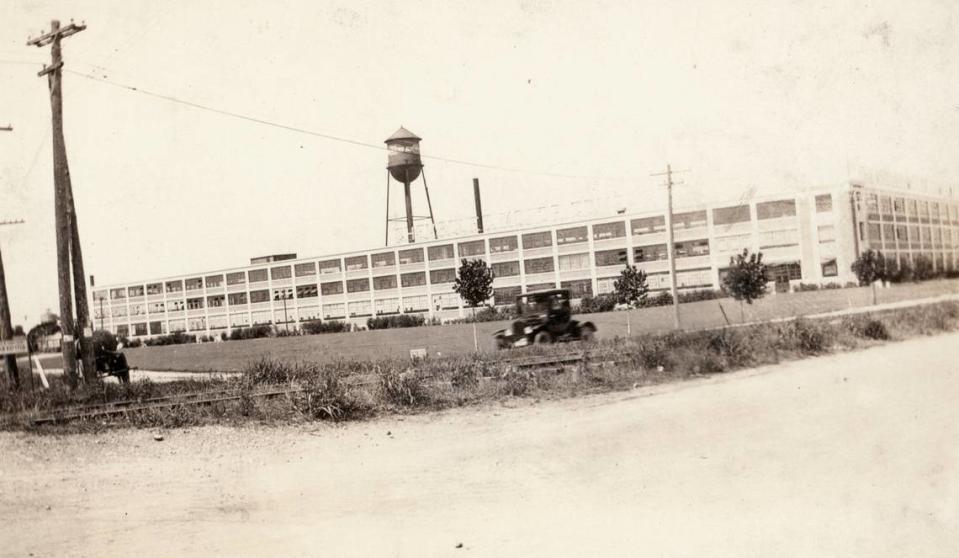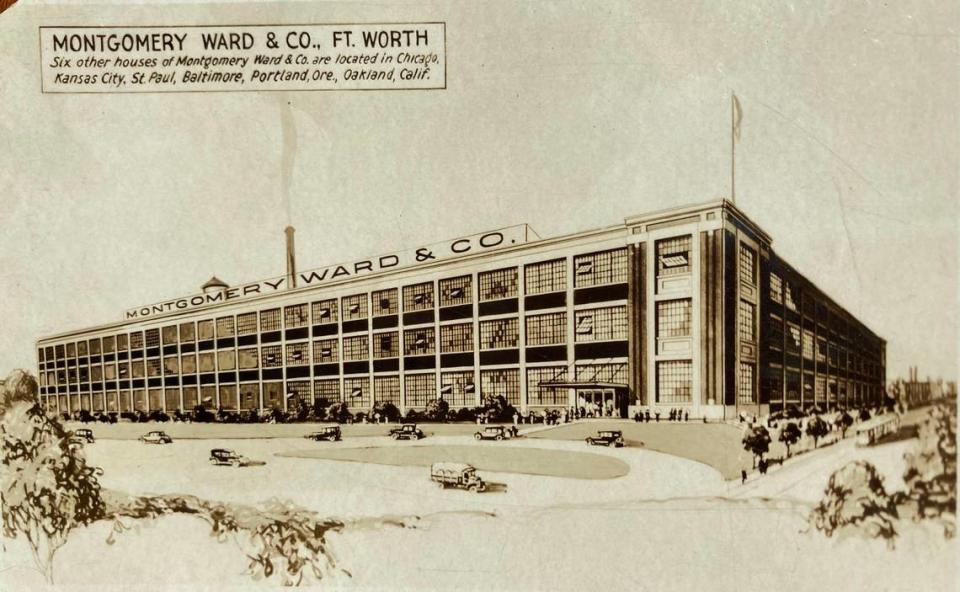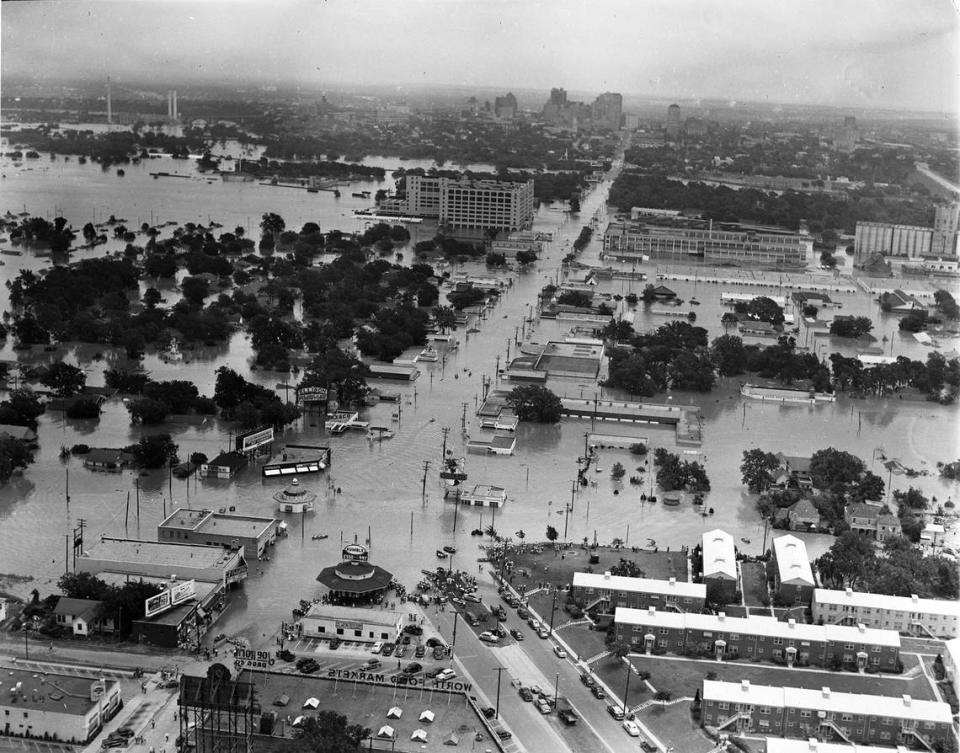A forgotten chapter of Fort Worth history: When Chevrolets were built in Cowtown
Automobiles were the “new” bicycles of the early 20th century — a new and exciting form of transportation. Fort Worth’s first “horseless carriage” arrived in 1900 or 1902, depending on whether you believe it was driven by minstrel Lew Dockstader or bicycle shop owner H.R. Cromer.
Although by no means as affordable as a bike, there was a concerted effort to produce a basic car that the middle class could afford. Henry Ford’s Model-T led the pack in 1908, but Chevrolet’s model 490 was a worthy competitor. The Chevy sold for $490 in 1917, while the Model-T runabout cost $500 that year.
Even more interesting, the Chevrolet was produced in Fort Worth.
Automobile enthusiasts such as Walter H. Beck as well as business leaders including Amon G. Carter, W.D. Reynolds and N.H. Lassiter were behind the new plant, which began construction in 1916.
Engineer Harry B. Friedman, then living in Detroit and working for the contractor W.E. Woods Co., came to Fort Worth to oversee construction of the plant. He was even credited by one source as the architect, but the fact that it was a near duplicate of an earlier plant built in Oakland, California, casts some doubt on that attribution.
Friedman eventually settled in Fort Worth. His son, Bayard Friedman, became mayor, and his daughter, Barbara Friedman, was one of Texas’ first female architects.
Friedman stated that his goal was to subcontract to local companies, if possible. This included 700 tons of steel supplied by the Texas Rolling Mill (later Texas Steel) and brick produced by Acme Brick. Concrete, however, came from Trinity Portland Cement in Dallas.

The plant — measuring 250 feet by 520 feet — was completed at a cost of $350,000 on the west side of the Trinity River, across from downtown Fort Worth. It stood on what was first called Arlington Heights Boulevard, now West Seventh Street. Because it was outside the Fort Worth city limits at that time, the plant had its own water supply and sewage system. A spur railroad line accessed the court of the U-shaped building, facilitating shipments. Large banks of windows provided light for the factory production process.
The plant was designed to produce 100 cars per day, assembling parts that were shipped to Fort Worth. But supply chain issues meant that only 25 cars per day were initially produced. The first 125 autos were shipped out the week of April 22, 1917.
The plant’s bread and butter was the assembly of the Chevrolet 490 model. The price was initially set at $490, but that rose rapidly as the United States became involved in World War I and needed military equipment. Supply problems – and spurts of bad weather – continued through 1918 and into 1919, when the plant managed to produce only 30 cars per day.
Hopes for increased production grew when a third story was added to the building in January 1920. Chevrolet held a party on the fourth anniversary of the plant’s groundbreaking, in November 1920, and announced that the Fort Worth sales division would expand its territory to include northern Mexico.
That wasn’t enough. Sales out of Fort Worth lagged behind other Chevrolet assembly facilities. Chevrolet paused production in May 1921. Then in November 1922, following a bad flood in the area on April 26, 1922, Chevrolet announced the sale of the plant.

Montgomery Ward leased the empty Chevy plant between 1924 and 1928 to house a temporary store while its main Fort Worth facility was built across what is now West Seventh Street. That building is now Montgomery Plaza.
A succession of occupants in the former Chevy plant included a rabbit display during the 1929 Southwestern Exposition and Fat Stock Show (it did not go well), the Fort Worth Paper Co., a General Motors Parts Division, Frigidaire, the David Crockett Life Insurance Co., Contract Interiors and Stafford Lowden.

The most notable company to occupy the plant was Tandy Corp., which placed its Radio Shack division in the building and then moved its corporate headquarters there in 1965.
Former Tandy chairman John Roach recounted a story about how Charles Tandy was introduced to a “bulky prototype” of the company’s first desktop computer in a conference room at the headquarters building. After viewing a demonstration, Tandy reportedly green-lighted production of the groundbreaking device, saying, “Let’s go ahead. If we can’t sell ‘em, we can always use them in the store for something.” By 1986, Tandy personal computers accounted for one-third of the company’s sales.
None of this history was enough to save the building. The owner decided to demolish the structure in 1986, saying, “We don’t have a use for it.” This was long before the redevelopment of West Seventh Street. If the old Chevy assembly plant had survived another few years, it might have been redeveloped as the ultimate in light-filled loft apartments.
Carol Roark is an archivist, historian, and author with a special interest in architectural and photographic history who has written several books on Fort Worth history.

